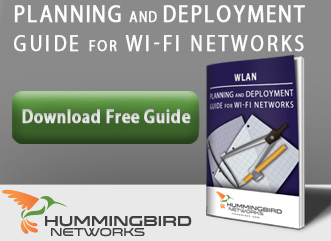In many ways, the evolution of the cellular network and WiFi network couldn’t be more different. That’s a bit ironic, because WiFi is looking more like cellular and, as time passes, the two wireless networking techniques will increasingly interoperate.
Cellular, of course, was built for global communications. In this country, it uses licensed -- and therefore expensive -- spectrum. WiFi, on the other hand, uses spectrum that is free. Until relatively recently WiFi was more an enabler than a major platform. Its goal was to traffic data around homes, businesses and other isolated venues.
 Benefits of Passpoint WiFi
Benefits of Passpoint WiFi
During the past few years, there has been a systematic effort to upgrade WiFi to carrier and enterprise grade. This involves building bridges between these isolated islands of connectivity, which is hugely challenging – and hugely rewarding. A more substantial version of WiFi is a big step toward the pervasive connectivity that utilizes all forms of wired and unwired networks. In addition, carriers gain the options of offloading cellular traffic to cheaper WiFi and a powerful backhaul tool.
A key challenge is to make WiFi look like a cellular network in which users roam between access points (APs) and networks without reauthorizing themselves. That is where a technique called Passport comes in. The WiFi Alliance Protocol is the branded name of a project called Hotspot 2.0. Launched in 2012, Passpoint/Hotspot 2.0 allows WPA2-protected roaming between APs. Now, subscribers to one WiFi network can log-in and roam to sister networks – for instance, moving from one cable MSO’s network to another – without reauthorizing.
PCWorld’s Mark Hachman summed up Passpoint’s value proposition at PC World:
"Passpoint is essentially a “free” upgrade to Wi-Fi service that you (and your phone) may not even be aware of. As Passpoint rolls out further, you may be able to surf courtesy of a Wi-Fi provider instead of sucking data from your wireless data plan. Passpoint appears to be a win-win for all concerned."
The Alliance last year added updates to Passpoint WiFi that include a standardized signup method and the ability of subscribers to set limits on their roaming. For instance, the user can set the system to decline connectivity if the cost for access exceeds a certain amount or if minimum security requirements are not met.
Though all WiFi traffic is not yet trafficked between service providers via Passpoint, it is out and operational. Boingo, which specializes in providing WiFi connectivity to large venues, has made a lot of news in this area during recent months. Last December, Boingo entered into an agreement with Time Warner Cable to provide Passport-enabled roaming between TWC Internet and Boingo customers at thousands of locations, including 25 U.S. airports. Last month, Boingo and Sprint announced a multiyear agreement roaming between Sprint subscribers with Passport-enabled phones and Boingo WiFi networks at 35 U.S. airports.
The planners and developers in charge of evolving WiFi from its roots as a rudimentary networking technology to a co-equal to wired and cellular networks have made significant gains. This means that demands on enterprise and service provider WiFi networks will increase. This extends from the networks themselves to the wired networks that support the access points.
These networks will generate more traffic as they host traffic that otherwise would be on cellular and wired networks and host new native services, such as WiFi calling. This puts more pressure on all elements of the overall network, not just the wireless portions. For instance, the Cat 5 and Cat 6 cabling that connect APs to the network are in the process of being overwhelmed by every faster wireless standards. Network planners must pay attention to all portions of the network.
Carl Weinschenk is a freelance writer and owner of Weinschenk Editorial Services (www.weinschenkeditorial.com). WES helps upgrade the editorial content of IT and telecommunications websites.











